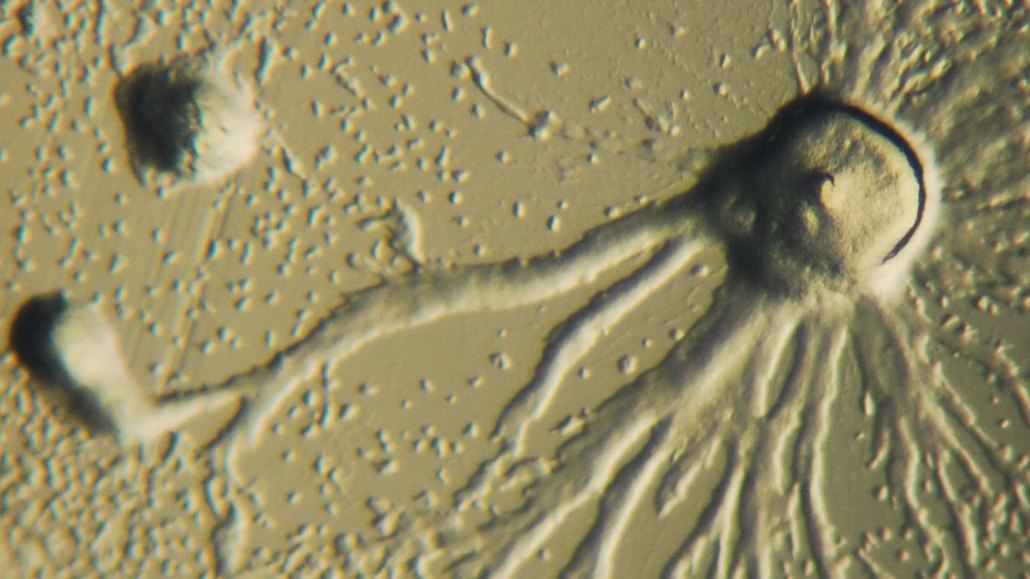Tiny amoebas move faster when carrying cargo than without
‘Delivery trucks’ modeled after the microbes could help scientists target disease in the body

Single-cell Dictyostelium discoideum amoebas (small dots) gather together to form large, multicellular blobs. The microbes can travel while carrying cargo, making them useful for studying precision medicine.
Bruno in Columbus/Wikimedia Commons







